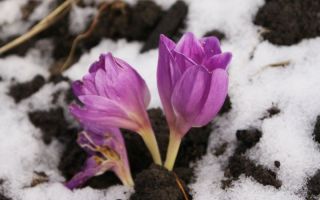Content
The medicinal properties of autumn crocus are highly valued by traditional medicine. But since the plant belongs to the category of poisonous, they use it with extreme caution.
What it looks like and where it grows
Colchicum autumnale (Colchicum autumnale) is a perennial plant from the Liliaceae family with oblong corms. Annually releases a young shoot from the bud at the base of the underground part, blooming by the next autumn. At the same time, the old tuber dies off. The leaves of the crocus are long with a sharp end, extending upward from the ground itself, forming a narrow rosette. The flowers are bell-funnel-shaped, with diverging petals and six stamens in the inner part. The shade of the buds is usually pink and purple, flowering occurs from August to October, which is reflected in the name of the plant. Colchicum fruits are three-nested polyspermous capsules of an oblong shape.
The plant has an unusual life cycle. Colchicum ovary develops underground in the cold season, after which it comes to the surface in spring along with the leaves. Seeds ripen in June, and the green parts of the plant die off. Until autumn, the crocus stays in a state of rest, and closer to the onset of cold weather it brings beautiful buds.

The culture is widespread in the subtropical zones - in southern Europe, the Mediterranean, Asia. You can meet the plant in North Africa and the Caucasus, in Lithuania and Ukraine. On the territory of Russia, autumn crocus develops in natural conditions in the Krasnodar Territory, and artificially it is cultivated throughout the middle lane.
Chemical composition
Photos and medicinal properties of the autumn crocus are of interest due to the chemical composition of the plant. Its leaves, seeds and buds contain the following valuable substances:
- colchicine and colchamine;
- specialosin and colchitzerin;
- phytosterols;
- copper and magnesium;
- flavonoids;
- iron;
- selenium and zinc;
- lipids;
- resins and tannins;
- potassium and calcium;
- Sahara;
- aromatic acids.
Useful properties of autumn crocus
Means based on the autumn crocus can be used only in strict accordance with safe dosages. When used carefully, the medicinal plant:
- serves as a natural analgesic and relieves pain;
- prevents the development of oncological tumors;
- lowers blood pressure;
- helps to fight inflammatory processes and has a disinfecting effect;
- relieves rheumatism and arthritis;
- accelerates the healing of skin and mucous membranes;
- has a diuretic effect and relieves edema;
- promotes the removal of sand and small stones from the kidneys.
Traditional medicine uses the plant in the treatment of dental ailments, with severe pain, neuralgia, migraines.
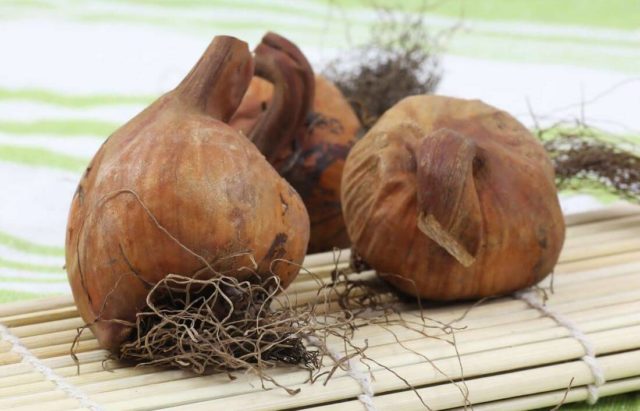
Preparation and application methods
Infusions and strong tinctures for external and internal use are prepared on the basis of autumn crocus. Traditional medicine offers several effective regimens.
Tincture
On the basis of fresh crocus bulbs, you can prepare a tincture for internal use. It is beneficial for joint pain and gout, neuralgia and migraines. They make it according to this recipe:
- fresh plant corms are grated or cut very finely with a knife;
- pour raw materials 100 ml of high-quality vodka;
- put away in a dark place for three weeks;
- remove and shake the vessel daily.
After the expiration of the period, the agent is filtered through cheesecloth from the remnants of raw materials. You need to use the tincture only once a day, one drop in a glass of warm water.
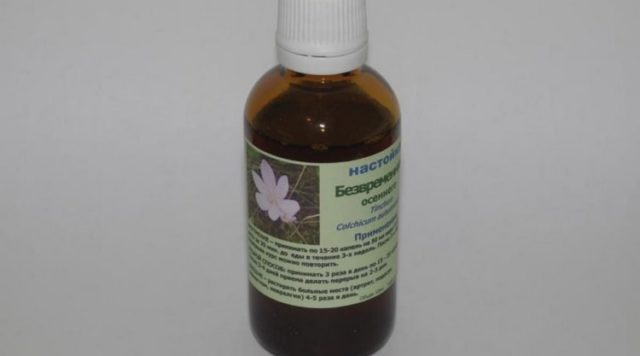
Infusion
Infusion of autumn crocus is prepared from dry plant tubers. The recipe looks like this:
- the raw materials are crushed in a volume of 1/2 small spoon;
- pour 500 ml of fresh boiling water;
- kept closed for two hours;
- filtered through cheesecloth.
You need to consume the infusion only 5 ml three times a day for edema, joint diseases and neuralgia, as well as for jaundice and whooping cough.
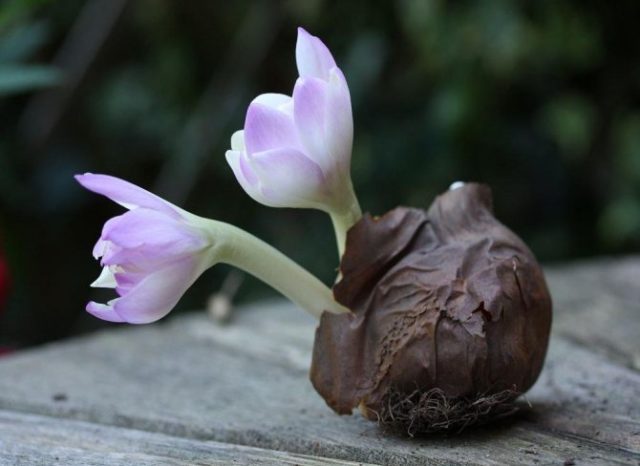
Ointment
For the treatment of articular diseases, homemade ointment from the autumn crocus is used. It is made on the basis of leaves, bulbs and seeds, and the recipe for cooking looks like this:
- all parts of the plant are mixed in equal volumes;
- measure out three large spoons of raw materials;
- pour 200 ml of hot water;
- boil over low heat on the stove until the solution turns into a viscous mass;
- hot mixed with vegetable oil in equal proportions;
- cooled at room temperature.
You can use the remedy for rheumatism, osteochondrosis and arthritis. A small amount of ointment is applied to sore joints before bedtime, covered with a warm bandage and left overnight.

Application in traditional medicine
Basically, the healing properties of colchicum tubers and its seeds are used to treat joints. Also, with the help of raw materials, you can cope with internal inflammation and digestive disorders.
With gout
An aqueous infusion on the bulbs of the plant helps well against gout. The cooking algorithm looks like this:
- dry raw materials are ground in a volume of 2 g;
- pour 500 ml of boiling water into a glass container;
- hold under the lid for two hours, then filter.
Take the infusion up to six times a day, while starting with only 2-3 drops, gradually increasing the dosage. The maximum single volume should not exceed 30 drops. For convenience, the drug is diluted in warm water or consumed in pure form, and then immediately washed down with liquid.
With radiculitis
With rheumatism and radiculitis, vinegar tincture of autumn crocus is beneficial. Traditional medicine offers the following recipe:
- dry onion is crushed in a volume of 10 g;
- raw materials are poured into 120 ml of table vinegar in a glass container;
- remove under the lid for infusion for two weeks;
- filter through folded gauze.
With an exacerbation of radiculitis, sore spots are rubbed with a medicinal tincture. It is enough to measure out only 5 ml of the product.
With arthritis
With aching joint pains, an alcoholic tincture on the seeds of an autumn crocus plant has a good effect. The cooking recipe looks like this:
- 100 g of dried seeds are poured into 1 liter of medical alcohol 70%;
- in a glass bottle, the product is kept in a dark place for three weeks;
- from time to time, the vessel is removed and shaken;
- after the expiration of the period, filter through a gauze filter.
The finished tincture is taken 20 drops three times a day in between meals.
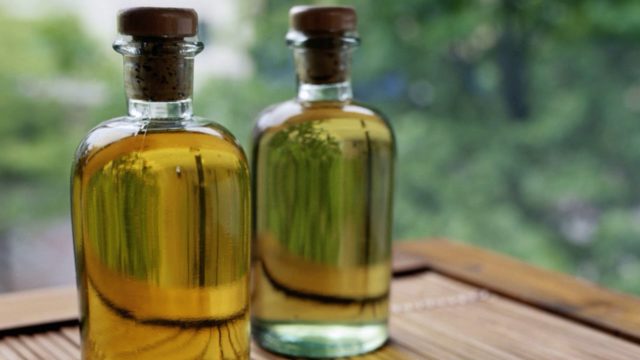
With cystitis
Tincture on fresh onions helps relieve inflammation in cystitis and urolithiasis. The tool is prepared according to the following algorithm:
- chop two fresh autumn crocus bulbs on a grater;
- pour 200 ml of vodka into the gruel;
- for three weeks removed to a dark place for infusion;
- after a lapse of time, filtered.
You need to take the tincture three times a day, just two drops per glass of water.
For muscle pain
With inflammation of the muscles and obsessive pain, the colchicum tincture, prepared according to this recipe, helps:
- dried plant bulbs are ground into powder;
- poured with medical alcohol in a ratio of 1: 5;
- for 15 days, they are removed closed in a dark, dry place;
- filter the finished product.
You need to take the tincture inside two drops shortly before bedtime with water. At the same time, rubbing of diseased joints can be carried out - the procedure is also carried out in the evening.
For constipation
In case of severe constipation, you can use an aqueous infusion of seeds of an autumn crocus. The tool is done like this:
- dry raw materials are ground with a mortar or ground in a coffee grinder;
- 2 g of the resulting powder are measured;
- pour 500 ml of boiling water;
- cover the container with a lid and wrap it up properly;
- stand for three hours.
The cooled infusion must be filtered and taken in 1/2 small spoon with a glass of clean water. It is allowed to use the drug up to four times per day.
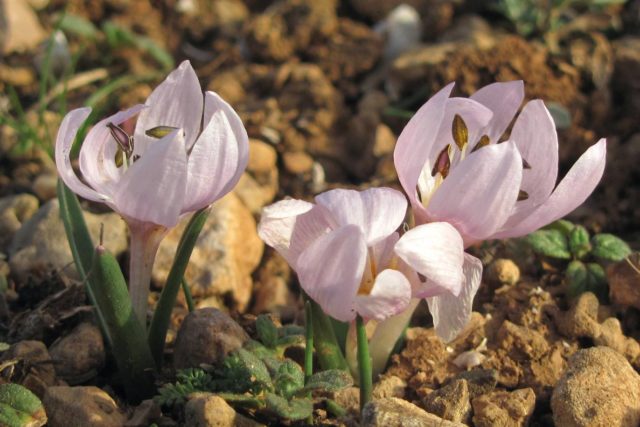
With oncology
Tincture of autumn crocus helps to reduce the intensity of pain in cancer. A plant-based remedy is done like this:
- pour 10 g of seeds with 120 ml of 70% alcohol;
- kept in a dark place under a lid for three weeks;
- pass the finished composition through cheesecloth.
The remedy is taken dropwise three times a day with warm water. With severe pain, a single dosage is allowed to be increased to two drops.
Contraindications
The medicinal properties and contraindications of the autumn crocus are closely related to each other. The plant is highly poisonous and can cause severe harm. It is necessary to completely abandon its use:
- with diseases of the bone marrow;
- with renal and hepatic failure;
- with diarrhea;
- with purulent diseases;
- with neutropenia;
- with internal bleeding;
- with individual allergies.
It is strictly forbidden for pregnant and lactating women to use infusions and alcohol products on the leaves, seeds and bulbs of the autumn crocus. Herbal medicines are not offered to children and adolescents under 18 years of age. Healing ointments from natural raw materials cannot be applied to the mucous membranes - the alkaloid colhamin will quickly enter the body and lead to the development of symptoms of poisoning.
When treating with autumn crocus, the recommended dosages should be carefully observed. If safe volumes are exceeded, a burning sensation appears in the throat, which is replaced by nausea and severe vomiting, as well as abdominal pain and diarrhea. Plant poisoning causes tachycardia, which quickly turns into a drop in heart rate and blood pressure. Intoxication can lead to heart attack or airway paralysis.
Collection and procurement
For medicinal purposes, primarily crocus bulbs are used. They are dug out during the flowering period - from late August to late October.The tubers are carefully removed from the ground along with the roots, shaken off the ground, but not washed, the raw material begins to rot from moisture and quickly deteriorates. The bulbs are dried in the fresh air, and then put in glass jars in a dark and cool place with good ventilation.
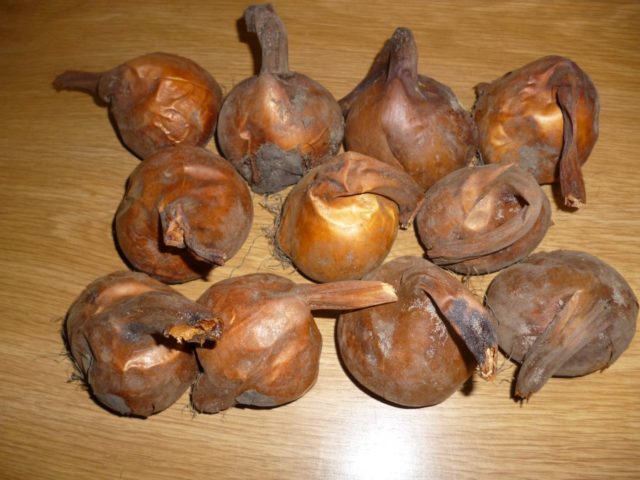
The leaves and seeds of the plant are harvested in early summer, immediately after the fruit pods have ripened. After harvesting, they are dried in the shade under a canopy, and then put into paper bags. The harvested aboveground parts of the crocus remain usable throughout the year.
Both bulbs and leaves of a poisonous plant must be worked with gloves and a face mask. The juice of the autumn crocus can get first on the skin and then on the mucous membranes - the latter will lead to poisoning.
Conclusion
The medicinal properties of autumn crocus deserve special attention in the treatment of joint ailments. When using the plant, you need to remember its strong toxicity and not exceed safe dosages.

